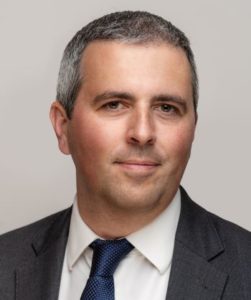After nearly five years of pension pooling, Chris Rule calls on local government funds to accelerate the transition of assets and make 2023 a turning point for the LGPS.
 The pooling of Local Government Pension Scheme (LGPS) assets is set to celebrate its fifth anniversary this coming April. Over the past five years we’ve seen a monumental effort by the 89 LGPS funds in England and Wales to bring together their assets and shape a new model for the industry.
The pooling of Local Government Pension Scheme (LGPS) assets is set to celebrate its fifth anniversary this coming April. Over the past five years we’ve seen a monumental effort by the 89 LGPS funds in England and Wales to bring together their assets and shape a new model for the industry.
But the full vision of pooling has yet to be realised. Pension pools and LGPS funds must look to 2023 as the year to accelerate the transition of assets if the scheme is to fully benefit from the opportunities that the pooling initiative offers.
While there will be five candles on the pooling cake, the project predates April 2018, when the pools were required to become operational, and can be traced back to the months before then chancellor George Osborne’s speech in the Summer Budget 2015. At the time, the whispers among industry experts included mandated passive investment. The rationale was that by cutting out active management you could cut costs.
The pooling vision
However, there was an opportunity to take a more radical, and even counterintuitive, approach. The emerging philosophy included retaining active management of investments, reducing reliance on a plethora of external agents and bringing more activity in-house. The aim was to get public pension funds working together to achieve greater scale, for improved investment opportunities and greater cost savings.
That was my objective when I joined the London Pensions Fund Authority (LPFA) in October 2014. With the Lancashire County Pension Fund as partner, the vision was to build a scalable platform that could support full-time specialist expertise, aligned with the asset and liability management challenges faced by the LGPS. Ultimately, this became Local Pensions Partnership, whose inception came ahead of the government’s plan for LGPS investment pools. This was made possible thanks to the foresight and philosophical alignment of the founders that formed the partnership.
Pooling happened quickly. For some funds it was imposed on them rapidly and, in certain cases, counter to their instincts, with little time to form close partnerships or align their objectives. As a result, each pool has developed at its own pace, producing a variety of business models. It has also created some inertia in the system, as objectives and implementation of models are thought through and aligned.
But now, at a time when pension funds may be paying out more (driven by the pension increase order coming in April) and collecting less in contributions (improved funding positions lean towards reduced contribution rates), our industry will need to work even harder to maintain the returns and cash flows required to achieve healthy funding positions and meet pension payments. Maximising the work done by the investment portfolio to meet these objectives is the best way to maintain affordability for employers and taxpayers. And this at a time when we are also committing to net-zero greenhouse gas emissions by 2050.
Pension pools and LGPS funds must look to 2023 as the year to accelerate the transition of assets if the scheme is to fully benefit from the opportunities that the pooling initiative offers.
Pooling’s time to shine
Despite the many challenges, 2023 should mark the turning point for the LGPS. We must accelerate the transition of assets and fully embrace the benefits of pooling.
While each pool occupies its own place on a spectrum of models, policy makers and market forces may demand some difficult decisions. I believe there is more than one way for a pool to succeed, but our industry will be guided by three clear themes in 2023.
Firstly, I expect there will be a transition in the market towards more concentrated pools of assets. That is to say, when determining investment strategy, LGPS funds will need to use asset allocation as the principal lever for balancing risk with reward, rather than inefficiently creating multiple implementations within asset classes to fit risk profiles.
For example, two funds may have different requirements for risk driven by their funding position (one higher, one lower). In both cases, it is unlikely they will need different equity portfolios. Instead, they should use their strategic asset allocation to blend different amounts of equity with other asset classes.
This allows everyone to access the same equity portfolio, which can be managed to achieve the best possible risk-adjusted returns within the equity asset class – maximising the benefit of scale and avoiding over-diversification. Otherwise, funds risk paying the higher fees for active management while ending up with a portfolio that simply tracks passive returns.
Which brings us to our second theme and the big question – why don’t pools collaborate more? If we accept that scale and efficiencies are key objectives, and combining assets helps to increase influence and reduce costs, then the sector needs to do more to prevent duplication and build more cross-pool investment partnerships.
As the saying goes – costs are certain, returns are not. When we pool our resources, expertise, vehicles and assets – whether that’s through joint ventures or allocating to each other’s investment pooling vehicles – we can share expertise, remove duplication, spread costs and improve risk-adjusted returns.
The final theme in 2023 will be greater emphasis on responsible investment behaviours and the integration of ESG practices. As the pools embark on their journeys to net-zero emissions, and LGPS funds understand their individual roles, responsibilities and reporting requirements, we will see the sector unite around important themes and issues. Improving the stewardship of our clients’ assets not only makes climate change sense, but it also inherently builds resilience into investment portfolios.
For some funds pooling was imposed on them rapidly and, in certain cases, counter to their instincts, with little time to form close partnerships or align their objectives.
Resolutions
As we head towards 2023, what are our new year resolutions?
With so much pressure on public finances and on LGPS funds themselves to deliver, we have a fiduciary duty to keep the original objectives of pooling alive. The next chapter in this story is to build on the exceptional progress already made and strive for stronger collaborations, improving efficiencies and a powerful, united and responsible investment voice.
Only by working together will we fully realise the intended benefits of pooling and the transformational change needed to secure the future pensions of millions of public sector workers.
Chris Rule is CEO at Local Pensions Partnership Investments and LPP Group.
—————
FREE weekly newsletters
Subscribe to Room151 Newsletters
Room151 LinkedIn Community
Join here
Monthly Online Treasury Briefing
Sign up here with a .gov.uk email address
Room151 Webinars
Visit the Room151 channel















